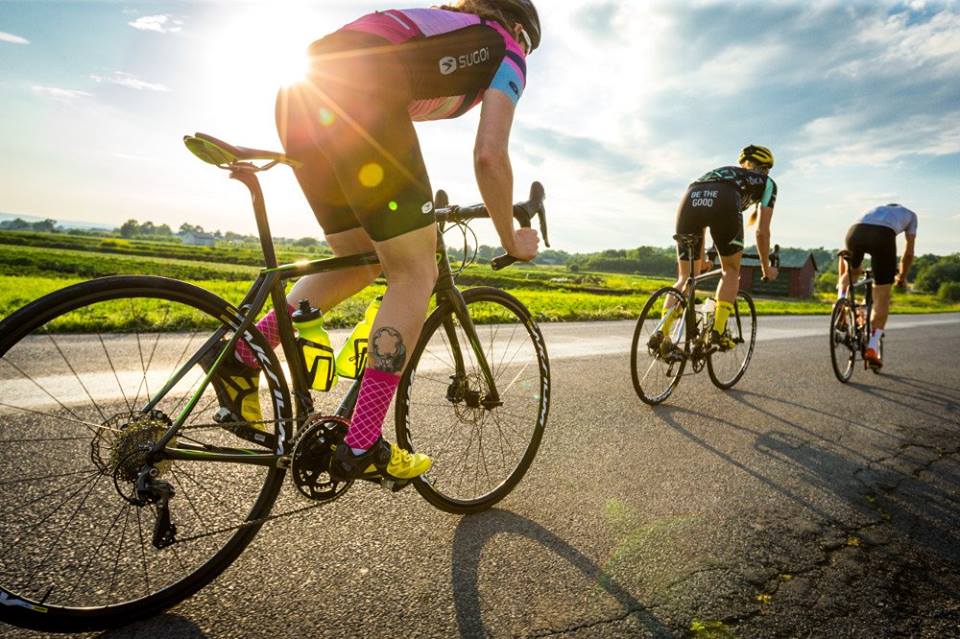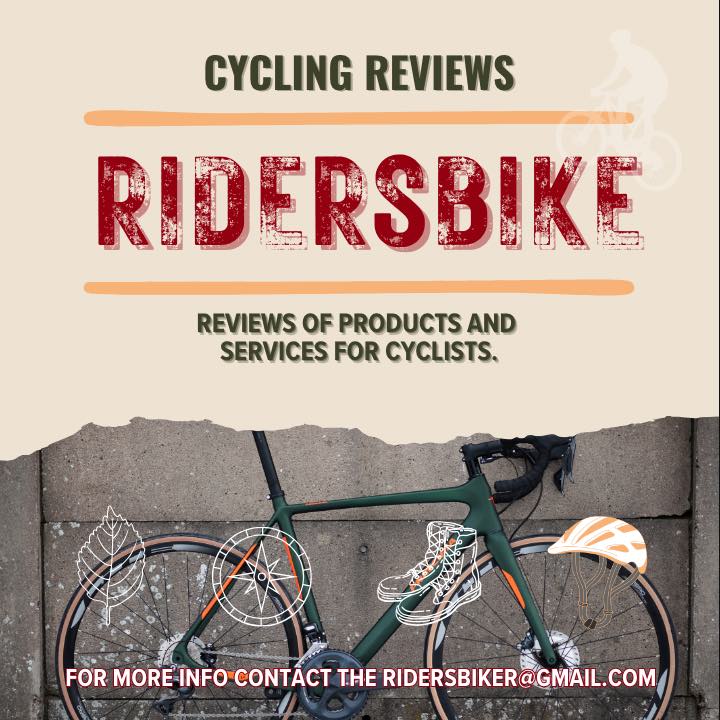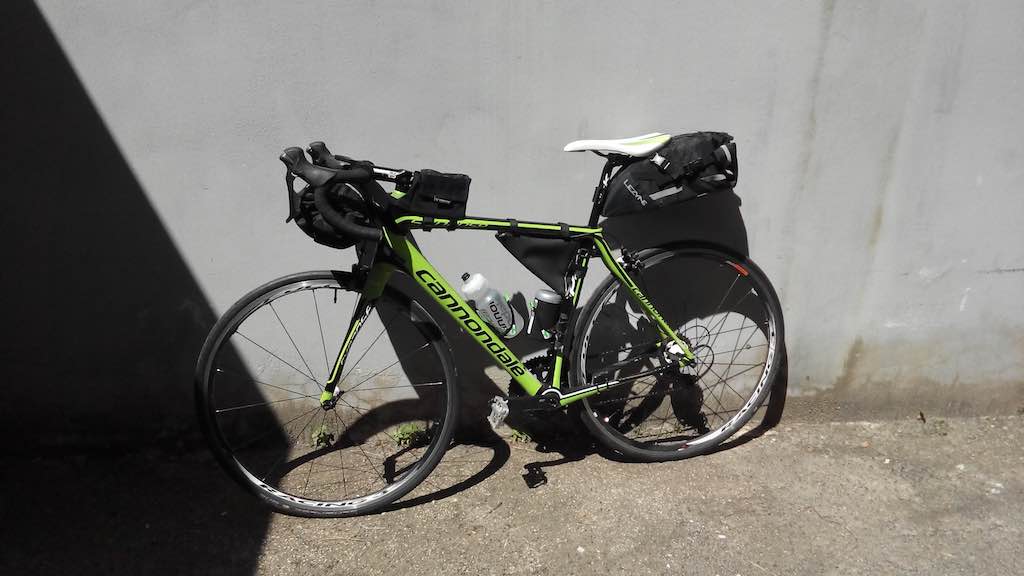[Test] Cannondale Synapse 2018: scattante, veloce, comoda

Cannondale Synapse, introduced on the market in 2006, is a very popular bike among cyclists, but…over time it has changed until arriving at the one presented in 2017. The previous version had pro and con comments, but almost all the cyclists interviewed, owners, defined the bike as more touring than competitive. What changes in the 2018 version? Let’s find out together, in our practical test.
First of all, we carried out the test on different routes, therefore a mix of dirt, woods, road (bitumen). Woods? Yes, you read that right…obviously a compact path.
The first impression is of being taller, so much so that, measuring in hand, the wheels have a higher profile than the previous version and, in any case, the same as the current EVO.
Some will say why we indicated the EVO, well… the new Synapse (2018 model) on the road behaves like that bike, that is, snappy in relaunches, fast, rigid enough, you release the power and you don’t lose it like in the previous model.
So on the road as on a path with compact terrain, the power is released perfectly without dispersive springing, keeping the bike rigid enough. A strange sensitive mix? No! It’s pure reality!
When you get downhill you need to know how to dose the braking with the disc, but we can say that, by modulating the braking distances, you have safety and precision. Obviously it is necessary to practice, especially for those who have never ridden a MTB. Also, those who ride a MTB will still have to practice because the disc on a racing bike is different from the braking of a mountain bike.
The carbon fork of the Synapse is designed so as to be able to absorb even sudden braking and, therefore, resist bending.
On dirt roads and on some pedalable paths in the woods, the bike continues its work efficiently, but pay attention to the type of terrain because you do not have a gravel with tires, whose size allows you to go on more technical terrain, and, therefore, if it is not compact, but with a lot of gravel, roots, rocks, you lose grip … the best mix is: bitumen / compact dirt roads.
Obviously also pay attention to the type of tire you mount, because if you use the bike only on the road then you will have to choose one type, while if you are planning to do a dirt / bitumen mix, the purchase must be such that it satisfies some conditions: grip, sliding, grip and thickness. Which size to buy? We tested, on different bikes, the 30, the 32 and the 28. Result? It depends on the use you want to make of the Synapse, i.e. trails and little bitumen? The 32 is fine, to the detriment of the sliding on the bitumen which will be a bit awkward, decreasing the speed. The 30? A middle way, preferring dirt roads. The 28? If you choose the most suitable tire, you can do some dirt roads.
A larger section offers greater grip, better stability and high vibration absorption. In fact, numerous studies conducted by manufacturing companies have shown how the vibrations of the ground are discharged more directly on smaller section tires, since they tend to become a sort of non-deformable “tie rod” that transmits every blow to the wheel, while increasing the section improves deformability and shock absorption.
What tread and design of tires? Well, here personal choices and the needs dictated by the use that will be made of the bike come into play. You can fit road tires, commuting tires or cyclocross tires.
Some companies sell tires conceived and designed for gravel use, such as Continental’s Speed Ride. Remember to check the puncture resistance of the tires, which must be very high.
The tire you see in the photo (above) is a Continental, 28, which has good grip on dry surfaces and reasonably good on wet surfaces. Excellent on even compact, slightly muddy terrain, on gravel roads however you have to be very careful, especially when cornering.
The Synapse is not a cross bike that can fit tires up to size 37 (Cannondale bikes). The 2018 Synapse, however, can provide satisfaction and fun, as long as you know how to choose the tires that suit your riding style.
The new Synapse is built entirely around disc brakes, mounted on a frame that weighs 950 g for a size of 56 cm, in the Hi-Mod version. The disc you see above in the photo is 160, while the rear is 140.
The rigidity, as we said above, has increased. Cannondale tells us that the 9.4% increase closes the stiffness gap between the Synapse and the SuperSix Evo more than ever before. And it’s true!
The SiSL2 crank is one of the stiffest and lightest out there.
Cannondale goes a step further and has developed three forks with different offsets and headset bearing diameters. The smaller frames have a shorter offset, the larger frame measures a larger offset, to produce the desired handling traits across the entire size range.
The 44cm and 48cm frame sizes use a 1 1/8″ straight steerer with 60mm offset. The 51cm and 54cm use a 1 1/4″ tapered steerer with 55mm offset, while the 56, 58, and 61cm frames have a 1 3/8″ tapered steerer tube chamfer of 45mm.
Offset is simply the distance from the front axle to the steering axis. Changing the offset affects the trail of the bike and affects handling. The smaller the offset, the longer the trail, and generally a longer trail leads to slower or more relaxed handling.
In addition to different offsets, fork stiffness changes across the size range. As the size increases, the stiffness of the fork increases, with larger tubes also allowing for longer downtubes. rigid.
The seatpost retains the same slim 25.4mm diameter as the previous Synapse, but it’s a completely new design that uses SAVE technology. It’s meant to help absorb road chatter and vibrations and offer greater comfort when you’re on the move. Cannondale claims an extra 36% more deflection than non-SAVE with no weight penalty. We honestly didn’t notice the compliance…
There are some subtle geometry revisions up front. The head angle is steeper, the wheelbase and head tube are shorter, but stack and reach figures are the same at 590mm and 386mm respectively.
Another change is improved cable routing. It’s fully internal and compatible with all current mechanical and electronic groupsets, with the main entry port at the top of the down tube.
As with the previous Synapse range, there are two versions, the HiMod Ballistec Carbon and Ballistec Carbon. The former uses high modulus carbon for real weight savings, but is more expensive. The Ballistec Carbon frame does without high modulus carbon, so it will be a bit heavier.
Here is the full range of bikes at launch:
Hi-Mod
Synapse HM Disc D / A Di2 £7,799.99
Synapse HM Disc Red eTap £6,499.99
Synapse HM Disc D / A £4,999.99
Carbon
Synapse Crb Disc Red eTap £4,999.99
Synapse Crb Disc D / A £3,999.99
Synapse Crb Disc Ult Di2 £3,799.99
Synapse Crb Disc Ult SE £3,249.99
The bike as pictured can be booked at the Bicisport – Florence store
Cannondale Synapse, introdotta sul mercato nel 2006, è una bici molto popolare tra i ciclisti, ma…nel corso del tempo è cambiata sino ad arrivare a quella presentata nel 2017. La precedente versione ha avuto commenti prò e contro, ma quasi tutti i ciclisti intervistati, possessori, hanno definito la bici più da touring che agonistica. Cosa cambia nella versione 2018 ? Andiamo a scoprirlo insieme, nel nostro test pratico.
Premessa, il test lo abbiamo svolto su percorsi differenti quindi un misto di sterrato, bosco, strada (bitume). Bosco ? Si avete letto bene…ovviamente sentiero compatto.
La prima impressione è di essere più alti, tant’è che, misura alla mano, le ruote sono a profilo più alto rispetto alla precedente versione e, comunque della stessa EVO attuale.
Qualcuno dirà perché abbiamo indicato la EVO, bhe…la nuova Synapse (modello 2018) su strada si comporta come quella bici, cioè scattante nei rilanci, veloce, rigida quanto basta, scarichi la potenza e non la perdi come nel precedente modello.
Quindi su strada come in un sentiero dal terreno compatto, la potenza si scarica perfettamente senza molleggiamenti dispersivi, mantenendo la bici rigida quanto basta. Uno strano mix sensitivo ? No! E’ pura realtà!
Quando si arriva in discesa bisogna saper dosare la frenata con il disco, ma possiamo dire che, modulando gli spazi di frenata, si ha sicurezza e precisione. Ovviamente è necessario fare pratica, soprattutto per chi non è mai andato in MTB. Altresì chi va in MTB dovrà comunque far pratica in quanto, il disco su bici da corsa, è differente dalla frenata della mountain bike.
La forcella in carbonio della Synapse è progettata in modo da poter attutire frenate anche brusche e, quindi, resistere alla flessione.
Sullo sterrato ed in qualche sentiero pedalabile nel bosco, la bici continua il suo lavoro in modo efficiente, ma attenzione al tipo di terreno poiché non avete una gravel con gomme, le cui dimensioni vi permettono di andare su terreno più tecnico, e, quindi, se non è compatto, ma con molta ghiaia, radici, sassi, si perde di aderenza…il miglior mix è: bitume/sterrati compatti.
Ovviamente attenzione anche al tipo di copertone che montate, in quanto se usate la bici solo su strada allora dovrete indirizzarvi ad un tipo, mentre se avete in mente di fare un mix sterrato/bitume, l’acquisto dovrà essere tale che soddisfi alcune condizioni: tenuta, scorrimento, grip e spessore. Quale dimensione acquistare ? Abbiamo testato, su bici differenti, il 30, il 32 ed il 28. Risultato ? Dipende dall’utilizzo che volete fare con la Synapse, cioè sentieri e poco bitume ? il 32 va bene, a discapito dello scorrimento sul bitume che risulterà un pò impacciato, diminuendo la velocità. Il 30 ? Una via di mezzo, prediligendo gli sterrati. Il 28 ? Se scegliete il copertone più adatto, qualche sterrato lo potrete fare.
Una sezione maggiorata offre maggior grip, una stabilità migliore e un elevato assorbimento delle vibrazioni. Infatti numerosi studi condotti dalle aziende produttrici hanno dimostrato come le vibrazioni del terreno si scaricano in maniera più diretta su copertoni di sezione più piccola, poiché tendono a diventare una sorta di “tirante” indeformabile che trasmette ogni colpo alla ruota, mentre aumentando la sezione migliora la deformabilità e l’ammortizzamento.
Quale tassellatura e disegno dei copertoni ? Eh, qui entrano in gioco scelte personali e le esigenze dettate dall’uso che si farà della bici. Si possono montare pneumatici da strada, da commuting oppure coperture da ciclocross.
Alcune aziende vendono pneumatici pensati e progettati per un uso gravel, come Speed Ride della Continental. Ricordatevi di controllare la resistenza alle forature dei copertoni che deve essere molto alta.
Il copertone che vedete in foto (sopra) è un Continental, di 28, che ha una buona aderenza sull’asciutto e discretamente sul bagnato. Ottimo in terreni anche compatti, poco fangosi, su strada ghiaiosa invece bisogna fare molta attenzione, in primis in curva.
La Synapse non è una bici da cross che può montare copertoni sin a dimensione del 37 (bici Cannondale). La Synapse del 2018 tuttavia potrà regalare soddisfazioni e divertimento, purchè sappiate scegliere i copertoni adatti al vostro stile di guida.
Il nuovo Synapse è costruito interamente attorno ai freni a disco, montati su un telaio che pesa 950 g per una misura di 56 cm, in versione Hi-Mod. Il disco che vedete sopra in foto e di 160, mentre il dietro è 140.
La rigidità, come dicevamo prima più su, è aumentata. Cannondale ci dice che l’aumento del 9,4% riduce il divario di rigidezza tra Synapse e SuperSix Evo più che mai. Ed è vero!
La pedivella SiSL2 è una delle più rigide e leggere in circolazione.
Cannondale fa un ulteriore passo avanti e ha sviluppato tre forcelle con diversi offset e diametri dei cuscinetti delle cuffie. I telai più piccoli hanno un offset più corto, il telaio più grande misura un offset più grande, per produrre i tratti di maneggevolezza desiderati in tutta la gamma di taglie.
Le misure dei telai da 44 cm e 48 cm utilizzano un cannotto dritto da 1 1/8 “con uno spostamento di 60 mm. Le misure da 51 cm e 54 cm utilizzano un cannotto conico da 1 1/4 di pollice con offset da 55 mm, mentre i telai da 56, 58 e 61 cm hanno uno smusso conico del tubo di sterzo da 1 3/8 pollici di 45 mm.
L’offset è semplicemente la distanza dall’asse anteriore rispetto all’asse dello sterzo. Cambiare l’offset influisce sulla scia della bici ed influenza sulla maneggevolezza. Minore è l’offset, maggiore è la lunghezza della scia, e generalmente una scia più lunga porta a una movimentazione più lenta o più rilassata.
Oltre all’offset diverso, la rigidezza della forcella cambia in base all’intervallo delle dimensioni. Con l’aumentare delle dimensioni, aumenta la rigidità della forcella, con i tubi più grandi che consentono anche i downtubes più rigidi.
Il reggisella mantiene lo stesso diametro sottile di 25,4 mm della precedente Synapse, ma è un design completamente nuovo che utilizza la tecnologia SAVE. Ha lo scopo di aiutare a assorbire le vibrazioni e le vibrazioni della strada e offrire un maggiore comfort quando si è in viaggio. Cannondale ha dichiarato una deviazione extra del 36% in più rispetto ai non SAVE senza penalità di peso. Sinceramente non ci siamo accorti di questa flessibilità…
Ci sono alcune sottili revisioni geometriche nell’anteriore. L’angolo della testa è più ripido, il passo e il tubo sterzo sono più corti, ma le cifre di stack e reach sono le stesse, rispettivamente 590 mm e 386 mm.
Un altro cambiamento è il routing del cavo migliorato. È completamente interno e compatibile con tutti i gruppi meccanici ed elettronici attuali, con la porta di ingresso principale nella parte superiore del tubo obliquo.
Come per la precedente gamma Synapse, ci sono due versioni, HiMod Ballistec Carbon e Ballistec Carbon. Il primo utilizza carbonio ad alto modulo per il reale risparmio di peso, ma è più costoso. Il telaio Ballistec Carbon fa a meno del carbonio ad alto modulo, quindi sarà un po ‘più pesante.
Ecco l’intera gamma di biciclette al momento del lancio:
Hi-Mod
Synapse HM Disc D / A Di2 £ 7.799,99
Synapse HM Disc Red eTap £ 6499,99
Synapse HM Disc D / A £ 4,999,99
Carbonio
Synapse Crb Disc Red eTap £ 4,999,99
Synapse Crb Disc D / A £ 3.999,99
Synapse Crb Disc Ult Di2 £ 3,799,99
Synapse Crb Disc Ult SE £ 3,249,99
La bici come in foto è prenotabile presso il negozio Bicisport – Firenze















